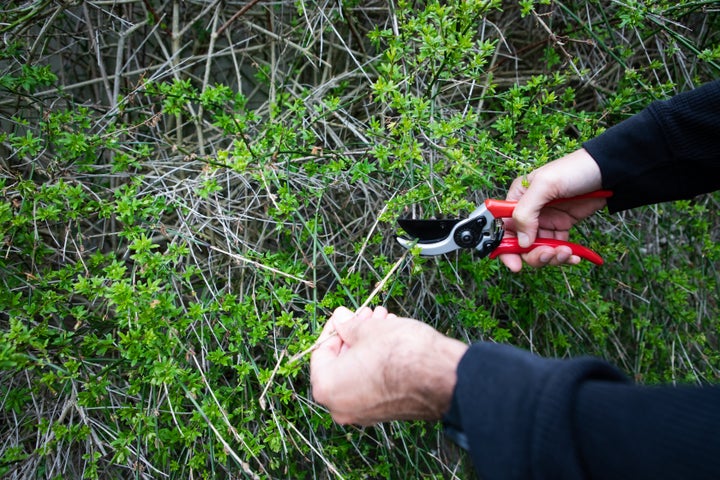
If you’ve got a garden, you’ll probably already know that autumn is the season for harvesting, digging, and yes, pruning. But when it comes to one common plant, experts warn you should set your shears aside – at least for now.
Multiple sources, from the Woodland Trust to the Royal Horticultural Society (RHS), recommend keeping the ivy in your garden alive and unpruned in the colder months.
Often (falsely) believed to strangle healthy trees, the plant actually has many benefits for the UK’s dwindling ecosystem – especially in autumn.
There are numerous reasons to keep the plant wild as the weather runs colder (so long as it’s not on your brickwork) – so we thought we’d share the benefits of it, as well as when you might actually want to cut it back or remove it from your garden entirely.
The plant is a rare late bloomer
Arboreal ivy’s flowers and fruits bloom late in the year, providing food for creatures that would otherwise struggle to source it. “Flowering from September to November, ivy is one of the last garden nectar sources for late-flying insects,” the Woodland Trust shared.
Pruning it can remove those all-important nectar sources and fruits. “Birds feast on its fruit from November to January too – the high fat content is nutritious for birds like thrushes, blackcaps and blackbirds,” the Woodland Trust adds.
And that’s just the direct benefit of leaving the plants unpruned – if insects can thrive longer into the season, then birds and bats will have a food source for longer, too.
It (kind of) works as free garden insulation
The Royal Horticultural Society (RHS) suggests that ivy which is on the ground “greatly lessens the effect of frost, enabling birds and woodland creatures to forage in leaf litter during bitter spells”.
This is partly because its leaves are evergreen, so they stay verdant in the winter; so the more of them left undisturbed, the better.
Ivy offers cover on trees, as well – “it provides hiding, roosting, hibernating and nesting places for various animals, birds and insects (including butterflies), particularly during the winter months and in areas where there are few other evergreens,” the RHS shared.
Should I just never cut it, then?
There are some conditions under which you probably should get rid of, or prune, ivy. For instance, the plant is often removed from thin-crowned trees like ash and larch because of how much of the plants’ light it can steal when overgrown.
Common or English ivy can also conceal issues with your home’s brickwork and even cause instability and cracks in your home, so it’s advised to remove this from your outer walls – especially if you’re in an older building.
Ivy does particularly well on trees that are already old or decaying (perhaps this is why people associate it with poor tree health). And if the tree is especially sick, the added weight can make it unstable. The climber can also hide signs of decay.
Birch and some acers are often grown for their decorative bark, so any ivy which hides that is often removed. However, the RHS says “as ivy is not directly harmful to trees and is beneficial to wildlife, control is not usually necessary”.
So, let’s all agree to put our clippers down for now, shall we?